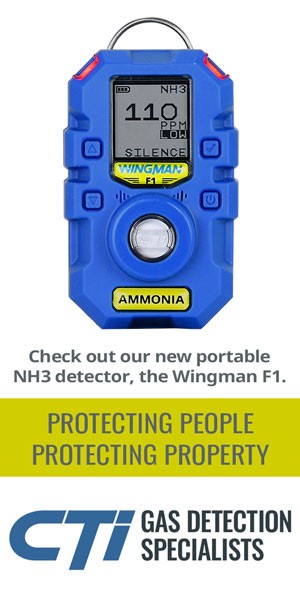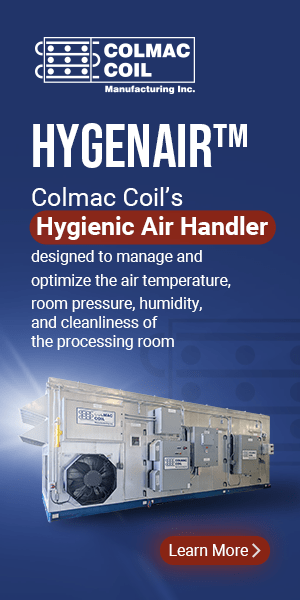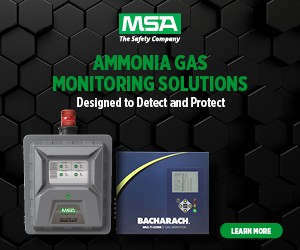Leading the Way: How IIAR’s Regulatory Relationships Create Value for the Industry and Agencies
For regulators and their industry partners, developing relationships can benefit both groups as they work towards improving safety, ensuring compliance, and shaping future regulatory requirements. As an association, IIAR is focused on advocacy and ensuring the industry has a voice.
“If we don’t use our voice, that voice isn’t going to be heard,” said Lowell Randel, senior vice president of government and legal affairs at the Global Cold Chain Alliance.
IIAR’s most important regulatory relationships include those with the Occupational Safety and Health Administration, the Environmental Protection Agency, and Homeland Security. All three agencies have direct regulations that affect the use of ammonia and other refrigerants.
Regulators and those in the industry share the same goal of keeping workers and the environment safe. “We may have different ideas of how to get there, but we start with our shared goals and priorities,” he said. “My philosophy is you really have to realize these agencies are made up of people. You need to get to know them, build relationships, and build trust.”
While regulatory agencies, regulators and industry representatives aren’t always going to agree, coming together with mutual respect and build mutual relationships enable them to work through challenging situations.
“We have well-established lines of communication, so when we have an issue or when a member has an issue, we can go to these agencies, ask the right questions, and identify potential solutions,” Randel said.
Benefits of Successful Relationships
There are different categories of success that can result from strong relationships. “One is stopping bad things from happening,” Randel said. “Those are ones that don’t make the headlines, and you don’t publicize them, but when you get wind of a potential change or issue, heading that off at the pass and stopping something negative from gaining momentum is really valuable.”
Another benefit is advancing regulations that benefit the natural refrigerant industry and working with regulatory agencies as they draft requirements. Randel said the AIM Act is a great example of this. “Getting a petition to EPA, getting it accepted by EPA, and having a seat at the table as the AIM Act regulations were being developed is one of those very identifiable accomplishments over the past several years where we’ve made significant strides,” he said.
There are other more granular accomplishments associated with rule-making around the Risk Management Program. “We’ve been through several rulemakings in the past ten years and have actively participated in those rulemakings. We’ve submitted comments, worked with members, and worked with coalitions to magnify our position,” Randel said. “While we didn’t get everything we wanted, you can see some of the recognition of concerns we raised and policies that could have been worse.”
Additionally, Randel said the EPA was trying to identify the minimum safety attributes of existing facilities, which go along with IIAR-9. “We were successful in working with and helping to ensure what EPA put forward was well informed from an industry perspective,” he said. “While we didn’t necessarily endorse the policy, we did feel like they listened and took our input and helped make for a better product.”
There have been times when IIAR and other associations have seen indications or trends of how agencies were interpreting or enforcing particular regulations or standards that the industry felt was counter to the letter of the regulation.
“We were able to go to the agency and say, ‘Our members are experiencing this, and we’re not really sure that is the intention.’ We were able to work through those issues and get headquarters to communicate back to the field,” Randel said, adding that as a result, regulators in the field avoided misunderstandings on the policy and enforcement technique.
IIAR has worked with the Global Cold Chain Alliance and the Ammonia Safety and Training Institute to address concerns that regulators were inspecting industrial refrigeration facilities more like they would a petroleum refinery and provide training.
“Over the years, I think we have very successfully gotten EPA and OSHA to acknowledge the importance of IIAR standards, and they are training OSHA inspectors about our standards and the uniqueness of industrial refrigeration facilities,” Randel said.
There are times when industry feedback may not have been accepted by regulators, but the industry provided insights and information. “I think a good example there is the Risk Management Program rulemaking that began during the Obama administration,” Randel said. “We made a lot of comments into that process. They didn’t do many of those things we suggested, but we had a change in administration, and the Trump administration did a reconsideration rule.”
IIAR once again submitted its comments. “Having that already being communicated on the record made that process even easier to say, ‘If this is going to be reconsidered, our position has been consistent, and we want to reiterate it,'” Randel said. “We’re not going to win them all, but you never know which piece of communication will have an impact. Even if 90% of what we’ve asked for doesn’t happen, that 10% we made them think about and helped them have a better understanding of is worth it.”
Getting Involved
IIAR’s members and those working within the refrigeration industry are critical, and it is important for them to share their firsthand experiences, submit comments, and provide position statements during the rulemaking process.
“If we’re not out there as an industry telling our story and what we believe the right policy should be, then the only voices and loudest voices are from non-industry representatives who don’t live and breathe industrial refrigeration on a regular basis,” Randel said.
When EPA or OSHA are going through a rulemaking process, the volume of input that they get from consumer groups, environmental groups or non-industry voices is significantly than what they get from industry. “We have to make sure that as an industry that our voice is heard,” Randel said.
When stakeholders share their expertise, the policies themselves are better informed and industry has a chance to make positive changes to the policies. “We’re able to impact how those policies are enforced on the ground,” Randel said.
Trust is an essential part of a successful relationship. Part of building trust is providing regulators with solid, reliable information, answering their questions, and being a resource for them when needed. “We want to be in a position where the agencies are going to come to us and see us as a trusted resource,” Randel said.
Future Involvement
In addition to past wins, there are also several regulatory issues that will need attention going forward, including the compliance preparation phase of changes to the Risk Management Program. “Something that members need to have on their radar making sure they’re ready for May of 2027 when the major provisions within that rule are going to be due for compliance,” Randel said.
Another issue is the AIM Act, which is continuing to be implemented. “We want to stay engaged on that,” Randel said, adding that other possible issues include Process Safety Management regulations and the Chemical Facility Standards Authority Program.
SIDEBAR: Best Practices for Forming Positive and Collaborative Relationships
Forming relationships with regulators or enforcement agencies may seem overwhelming at first, but there are several ways to establish and strengthen relationships.
Be Proactive: Reach out to introduce your company and its commitment to compliance and safety. Establish open lines of communication and regularly update regulators on your company’s activities, especially those related to safety, environmental protection, and regulatory compliance.
Invite Regulators to Your Facility: Invite regulators to tour your facility. Show them your operations, safety measures, and compliance protocols. You can also demonstrate new technologies or processes that improve safety, efficiency, or environmental impact. This helps build trust and allows regulators to see your commitment firsthand.
Attend Meetings and Workshops: Take advantage of meetings with regulatory bodies to discuss ongoing compliance, upcoming regulations, and industry trends. If possible, you can host workshops or training sessions with regulators to educate them about your operations and advancements.
Submit Comments: Participate in public comment periods for proposed regulations affecting the refrigeration industry. Provide constructive feedback based on your industry expertise. Use data and evidence to support your positions and suggestions. Demonstrate how proposed regulations may impact the industry and propose feasible alternatives.
Serve in an Advisor Roles: There may be opportunities to serve on advisory committees or working groups that contribute to policy development.
Participate in Industry Groups: Participate in industry associations and groups that work with regulators on your behalf. IIAR is always working with regulators so those in the industry can spend their time focusing on their core business objectives.











